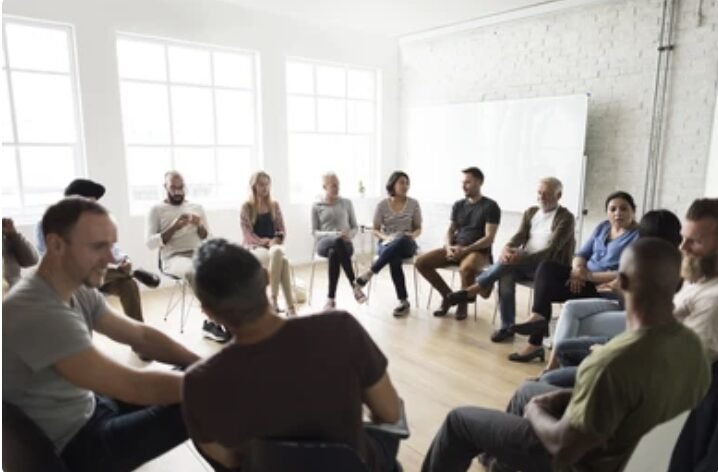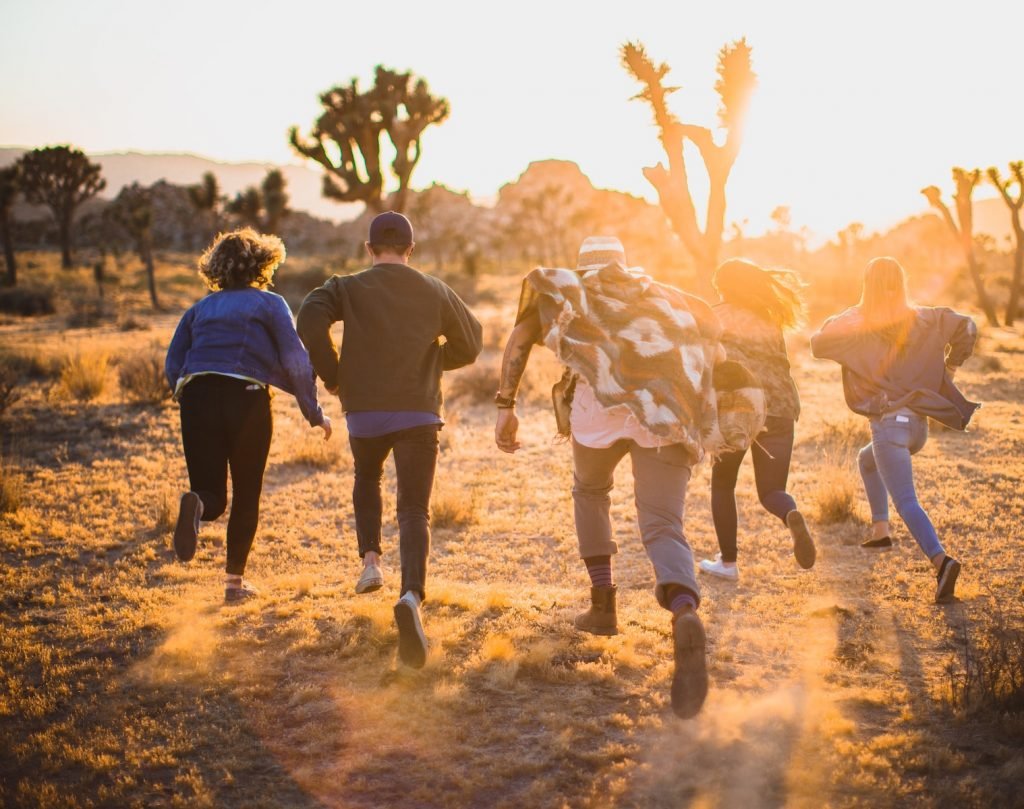This page lists the references used for a collection of writings titled Intentional Communities as Culture Change Agents.
A Sustainable Mind. (2016, April 26). 018: Building community through urban farming With Greg Peterson [Audio podcast episode]. https://asustainablemind.com/018-building-community-through-urban-farming-with-greg-peterson/
Aguirre, F. (2011). Child abduction after the collapse. http://ferfal.blogspot.com/2011/08/child-abduction-after-collapse.html
Aguirre, F. (2014a). Gun control: Defensive gun use (Part II). https://ferfal.blogspot.com/2014/10/gun-control-defensive-gun-use-part-ii.html
Aguirre, F. (2014b). Rural crime keeps getting worse: What do criminals look for? http://ferfal.blogspot.com/2014/11/rural-crime-keeps-getting-worse-what-do.html
Amorelli, L., Gibson, D., & Gilbertson, T. (Eds). (2021). Hoodwinked in the hothouse: Resist false solutions to climate change. https://climatefalsesolutions.org/wp-content/uploads/2021/06/HOODWINKED_ThirdEdition_On-Screen_version.pdf
Anna Maria. (2019, January 3). [Comment on the post “In the absence of the village, mothers struggle most”]. BethBerry. https://revolutionfromhome.com/2016/04/absence-village-mothers-struggle/
ATSDR. (2015a). Models and frameworks for the practice of community engagement. https://www.atsdr.cdc.gov/communityengagement/pce_models.html
ATSDR. (2015b). What is community engagement? https://www.atsdr.cdc.gov/communityengagement/pce_what.html
Awakin. (2021). The talisman of love. https://www.awakin.org/gandhi/598/recording?check=1
Baksh, D., & Thomson, A. (Directors). (2019). Yogurt utopia. https://www.globalhealthfilm.org/resources/46-yoghurt-utopia-2019
Bang, J. M. (2007). Growing eco-communities: Practical ways to create sustainability. Floris Books.
Barnes, C., & Limberg, P. (n.d.). Memetic tribes and culture war 2.0. https://www.themantle.com/philosophy/memetic-tribes-and-culture-war-20
Bartman, C. S. (2020). Challenges of finding housing for human trafficking victims. https://inpublicsafety.com/2020/01/challenges-of-finding-housing-for-human-trafficking-victims/
Beck, M. (2020). Episode 4: We are all one, let’s act like it [Audio podcast episode]. In The Gathering Pod. https://marthabeck.com/gathering-pod/we-are-all-one-lets-act-like-it/
Beck, M. (2021). Episode 55: Riding the maelstrom [Audio podcast episode]. In The Gathering Pod. https://marthabeck.com/gathering-pod/riding-the-maelstrom/
Beilock, S. L. (2020). Why young Americans are lonely. https://www.scientificamerican.com/article/why-young-americans-are-lonely/
Belic, R. (Director/Producer). (2011). Happy. [Documentary film]. https://wadirum.vhx.tv/
Bilyeu, T. (2018). The millennial question. https://www.youtube.com/watch?v=ABjQp17aD64
Booth, J. (2020). The price of tomorrow: Why deflation is the key to an abundant future. Stanley Press.
Bornstein, J. (2020). Transcript of episode 58 – Jake Bornstein on leadership & clarity. https://jimruttshow.blubrry.net/the-jim-rutt-show-transcripts/transcript-of-episode-58-jake-bornstein-on-leadership-change/
Bostrom, N. (2019). The vulnerable world hypothesis. Global Policy, 10(4). https://www.nickbostrom.com/papers/vulnerable.pdf
Bradshaw, C. J. A., Ehrlich, P. R., Beattie, A., Ceballos, G., Crist, E., Diamond, J., Dirzo, R., Ehrlich, A. H., Harte, J., Harte, M. E., Pyke, G., Raven, P. H., Ripple, W. J., Saltré, F., Turnbull, C., Wackernagel, M., & Blumstein, D. T. (2021). Underestimating the challenges of avoiding a ghastly future. In Frontiers in conservation science. https://doi.org/10.3389/fcosc.2020.615419
Braziers Park Channel. (2018). Intentional community: The art of living & the science of life. https://www.youtube.com/watch?v=VI0_3dPdmBg
Brand, S. (2006). Our future in cities. https://www.ted.com/talks/stewart_brand_what_squatter_cities_can_teach_us
Brooks, R. (2016). How everything became war and the military became everything: Tales from the Pentagon. Simon & Schuster.
Brown, B. (2017). Braving the wilderness: The quest for true belonging and the courage to stand alone. Penguin Random House.
Brown, C. B. (2020, October 21). Brené with Joe Biden on empathy, unity and courage [Audio podcast episode]. In Unlocking Us. https://brene.com/transcript/brene-with-joe-biden-on-empathy-unity-and-courage/
Burja, S. (2020). Great founder theory. https://samoburja.com/wp-content/uploads/2020/11/Great_Founder_Theory_by_Samo_Burja_2020_Manuscript.pdf
Cain, C., & Zappa M. U. (1999). Wild child: Girlhoods in the counterculture. Seal Press.
CBC News. (2019). A huge gap: Shelter space lacking for human trafficking victims in Ottawa. https://www.cbc.ca/news/canada/ottawa/human-trafficking-ottawa-lack-housing-1.5182085
Chen, E. M. (1989). The Tao te Ching: A new translation with commentary. Paragon House.
Cherry, K. (2020). How social loafing is studied in psychology. https://www.verywellmind.com/what-is-social-loafing-2795883
Chester, J., Monroe, M., Keats, S., Chester, M., Beal, J., Overbeck, A., Lennard, L., Messer, E., Gurinas, P., Gurinas, J., Cunningham, M., Lanpher, B., Martin, C., & Romanek, K. (2019). The biggest little farm. Universal City, CA, Universal Pictures Home Entertainment.
Chien, C.-P., & Cole, J. O. (2006). Landlord-supervised cooperative apartments: A new modality for community-based treatment. American Journal of Psychiatry. https://doi.org/10.1176/ajp.130.2.156
Christian, D. L. (2003). Creating a life together: Practical tools to grow ecovillages and intentional communities. New Society.
Christian, D. L. (2013). Busting the myth that consensus with unanimity is good for communities. http://www.resilience.org/stories/2013-03-20/busting-the-myth-that-consensus-with-unanimity-is-good-for-communities-part-ii
Colonna, J. (2019). Reboot: Leadership and the art of growing up. Harper Business.
Commons Church. (2019, June 6). An introduction to René Girard part 4: The adversary [Video file]. https://www.youtube.com/watch?v=TJmI7_KAbvE
Context Institute. (2014). What time is it? Part 3 [Video]. https://www.youtube.com/watch?v=bHVy7WkOe8Q
Cotter, A. (2020). Trafficking in persons in Canada, 2018. https://www150.statcan.gc.ca/n1/pub/85-002-x/2020001/article/00006-eng.htm
Covenant House. (2021). Opening doors for homeless & trafficked youth. https://www.covenanthouse.org/homeless-issues/human-trafficking
Deffeyes, K. S. (2005). Beyond oil: The view from Hubbert’s Peak. Hill and Wang.
Deloitte. (2019). Millennials: The overqualified workforce. https://www2.deloitte.com/us/en/insights/economy/spotlight/economics-insights-analysis-01-2019.html
Diamond, J. (2011). Collapse: How societies choose to fail or survive. Penguin.
Dodgson, L. (2018). The 10 professions with the most psychopaths. https://www.businessinsider.com/professions-with-the-most-psychopaths-2018-5#10-civil-servant-1
Drecovillage. (2014). Full-length tour of Dancing Rabbit Ecovillage at their 2013 open house. https://www.youtube.com/watch?v=6hXSyofrG6o
Ecovillagers Cooperative. (2016). Shared equity and worker-housing co-op collaboration. https://drive.google.com/file/d/1_KOpcy_un5eS0lVWFApTKDI8XRohf4ke/view
Eisler, R. (2016). The real wealth of nations: Caring economy tools for change makers. https://centerforpartnership.org/wp-content/uploads/2016/09/Real-Wealth-Chapter-Summaries.pdf
FarmlandLP. (2012). One acre feeds a person. https://www.farmlandlp.com/2012/01/one-acre-feeds-a-person/#.YFf81WRudfp
Ferris, T. (2007). The 4-hour workweek. Crown Publishers.
Ferriss, T. (2020, November 5). #478: Scott Kelly—Lessons learned from 500+ days in space, life-changing books, and the art of making hard choices [Audio podcast episode]. In Tim Ferriss Show. https://tim.blog/2020/11/05/scott-kelly/
Ferriss, T. (2020, November 19). #481: Dan Harris on becoming 10% happier, hugging inner dragons, self-help for skeptics, training the mind, and much more [Audio podcast episode]. In Tim Ferriss Show. https://tim.blog/2020/11/19/dan-harris
Ferriss, T. 2021 MAY 12, The Tim Ferriss Show Transcripts: Sebastian Junger: Seeking freedom, near-death experiences, and reordering your place in the world (#513). https://tim.blog/2021/05/12/sebastian-junger-freedom-transcript/
Ferriss, T. (2020, February 27). #501: Steven Pressfield on the artist’s journey, the wisdom of little successes, shadow careers, and overcoming resistance. https://tim.blog/2021/02/27/steven-pressfield-transcript/
Food Revolution Network. (2018). The need to grow [Documentary film]. https://grow.foodrevolution.org/?fbclid=IwAR2axYDB0xkoty32kxkokbzUIDtu7TvNrzycKWM1KEiOZVsAlaXoAZZiXzA
Note. Watch for free at this link from Earth Conscious Films.
Foster & Adoptive Care Coalition. (2019). The real “crisis” in foster care. https://www.foster-adopt.org/blog/real-crisis-foster-care/
Future Thinkers. (2021, May 28). Smart village update. [Video]. https://futurethinkers.org/episodes/
Future Thinkers. (2021, February 11) Miriam Martineau: Building an intentional community, ep 134. https://futurethinkers.org/miriam-martineau-intentional-community/
Frisch, B. (2008). When teams can’t decide. Harvard Business Review. https://hbr.org/2008/11/when-teams-cant-decide
Gervais, M. (2018, January 31). Best-selling author Gretchen Rubin. In Finding Mastery [Audio podcast Ep. 106]. https://findingmastery.net/gretchen-rubin/
Gervais, M. (2021, April 20). Overcoming mental health obstacles and finding peace. In Finding mastery [Audio podcast Ep. 274]. https://findingmastery.net/joanne-mccallie/
Gervais, M. (2021, June 2). Dr. Marissa King on forming intentional relationships. In
Finding Mastery [Audio podcast Ep. 280]. https://findingmastery.net/marissa-king/
Gladwell, M. (2019). Talking to strangers: What we should know about the people we don’t know. Little, Brown and Company.
Government of Canada. (2020). Government of Canada invests $19 million to reduce human trafficking and support those most impacted. https://www.canada.ca/en/women-gender-equality/news/2020/07/government-of-canada-invests-19-million-to-reduce-human-trafficking-and-support-those-most-impacted.html
Godin, S. (2008). Tribes: We need you to lead us. Penguin Books. http://proz-x.com/onlinelibrary/files/original/3002501306275b4d49682cd93ae18f28.pdf
Good News Translation. (n.d.). Bible hub. https://biblehub.com/luke/17-33.htm
Hall, J. (2017). Understanding the blue church. https://medium.com/deep-code/understanding-the-blue-church-e4781b2bd9b5
Hall, J. (2021, December 15). Web3: Tech vs the human condition [podcast]. In Rebel Wisdom, Ep. 177. https://rebelwisdom.podbean.com/e/web3-tech-vs-the-human-condition-jordan-hall/
HappyScribe. (2020). Conversations with Oprah: Elie Wiesel. https://www.happyscribe.com/public/oprah-s-supersoul-conversations/conversations-with-oprah-elie-wiesel
Haspel, T. (2014). Small vs. large: Which size farm is better for the planet? https://www.washingtonpost.com/lifestyle/food/small-vs-large-which-size-farm-is-better-for-the-planet/2014/08/29/ac2a3dc8-2e2d-11e4-994d-202962a9150c_story.html
Heben, A. (2018, June 26). From camp to village. Wisdom of communities 4: Sustainability in community: Resources and stories about creating eco-resilience in intentional community (Vol. 4, pp. 251-256). Communities Magazine.
Hickel, J. (2019). Bill Gates says poverty is decreasing. He couldn’t be more wrong. https://www.theguardian.com/commentisfree/2019/jan/29/bill-gates-davos-global-poverty-infographic-neoliberal
Hoeschele, W. (2018). The economics of abundance: A political economy of freedom, equity, and sustainability. https://www.routledge.com/The-Economics-of-Abundance-A-Political-Economy-of-Freedom-Equity-and/Hoeschele/p/book/9781138383371
Holt-Giménez, E. (2018). Can we feed the world without destroying it? Polity Press.
Hone, K. (2021). Ta ch’u: Controlled power. https://cafeausoul.com/iching/ta-chu-controlled-power
Horowitz, B. (2021). How to co-purchase and thrive on a land share. https://issuu.com/cowichanvalleyvoice/docs/april_2021_issue_149_web
IANDS. (2019, August 19). The future of earth: Ken Leth [Audio podcast episode]. In NDE radio. https://www.listennotes.com/podcasts/iands-presents-nde/the-future-of-earth-nde-rG-Ro4dv9KE/
Ikeda, S. (2013). The rural Libertarian as a historical anomaly. https://fee.org/articles/the-rural-libertarian-as-a-historical-anomaly/
Ikerd, J. (2016). Family farms of North America. http://www.fao.org/3/i6354e/i6354e.pdf
International Energy Agency. (2019). Women working in the rooftop solar sector. https://www.iea.org/reports/women-working-in-the-rooftop-solar-sector
Jensen, D. (2011). Endgame [Video]. https://www.youtube.com/watch?v=mtuxHVD4Srw
JohnCoate. (2018, December). [Comment on the post “A template for microsolidarity”]. Edge Ryders. https://edgeryders.eu/t/a-template-for-microsolidarity/9277
Johnson, S. (1998). Excesses blamed for demise of the commune movement. https://www.nytimes.com/1998/08/03/us/excesses-blamed-for-demise-of-the-commune-movement.html
Kellerman, G. R. (2023, Jan 25). How to thrive in a rapidly-changing work world [Audio podcast episode]. In Good Life Project. https://podcasts.apple.com/us/podcast/good-life-project/id647826736?i=1000596670411
Kerouac, J. (1976). On the road. Penguin Books.
Kashtan, M. (2018). Contribution to GTI roundtable feminism and revolution. https://greattransition.org/roundtable/feminism-revolution-miki-kashtan
Keizer, L. (2015). The pre-Christian teachings of Yeshua. https://www.academia.edu/11318607/THE_PRE_CHRISTIAN_TEACHINGS_OF_YESHUA Note. You can download for free at https://independent.academia.edu/LewisKeizer or buy in paperback.
King James Version. (n.d.). Bible hub. https://biblehub.com/matthew/
Kurzgesagt. (2018). A selfish argument for making the world a better place: Egoistic altruism [Video]. https://www.youtube.com/watch?v=rvskMHn0sqQ
Lalich, J. (2020). Characteristics associated with cults. http://cultresearch.org/help/characteristics-associated-with-cults/
Laloux, F. (2014). Reinventing organizations: A guide to creating organizations inspired by the next stage in human consciousness. Nelson Parker.
LaMothe, R. (2011). Radical hope: Ethics in face of cultural devastation [Review]. https://www.apadivisions.org/division-39/publications/reviews/radical-hope
Lear, J. (2008). Radical hope: Ethics in face of cultural devastation. Harvard University Press.
Lee. (2016, May 1). [Comment on the post “In the absence of the village, mothers struggle most”]. BethBerry. https://revolutionfromhome.com/2016/04/absence-village-mothers-struggle/
Li, M. (2018). From prisons to communities: Confronting re-entry challenges and social inequality. https://www.apa.org/pi/ses/resources/indicator/2018/03/prisons-to-communities
Local Futures. (2021). The economics of happiness [Documentary film]. https://www.localfutures.org/programs/the-economics-of-happiness/ Note. Watch for free at this site.
Lucas, A. (2017). From child sex slavery to victory: My healing journey. https://www.youtube.com/watch?v=tLp5LM18wIU
Macy, J. (2021). Three stories of our time. https://workthatreconnects.org/spiral/the-great-turning/the-global-context/
Marsh, S. (2009). German billionaire commits suicide after VW losses. https://www.reuters.com/article/us-merckle-newsmaker-sb-idUSTRE5055O820090106
McCoubrey, C. (2017). Don’t quote them on it. https://www.nytimes.com/2017/02/14/opinion/dont-quote-them-on-it.html
Mele, N. (2013). The end of big. St. Martin’s Press.
Microsolidarity. (n.d.). Congregating. https://www.microsolidarity.cc/congregating Note. Wikipedia has an overview of transformational festivals.
Mo, E. E. (Director/Producer). (2020). Permatopia [Documentary film]. https://filmsfortheearth.org/en/films/journey-to-utopia
Motesharrei, S., Rivas, J., & Kalnayc, E. (2014). Human and nature dynamics (HANDY): Modeling inequality and use of resources in the collapse or sustainability of societies. Ecological Economics, 101, 90-102. https://doi.org/10.1016/j.ecolecon.2014.02.014
Moul, C., Killcross, S., & Dadds, M. R. (2012). A model of differential amygdala activation in psychopathy. Psychological Review, 119(4), 789-806. doi:10.1037/a0029342
Nelson, A. (2018). Ecovillages: Sustainability and system change. In Small is necessary: Shared living on a shared planet (pp. 130-158). Pluto Press. doi:10.2307/j.ctt1zk0mpz.12
New Heart English Bible. (n.d.). Bible Hub. https://biblehub.com/matthew/
New King James Version. (1982). NKJV Online. https://www.biblestudytools.com/nkjv/
New King James Version. (n.d.). Biblehub. https://biblehub.com/ecclesiastes/4-6.htm
New York Times. (2022, June 17). The end of everything bubble [Audio podcast episode]. In The Ezra Klein show. https://www.nytimes.com/2022/06/17/opinion/ezra-klein-podcast-rana-foroohar.html
Nobel Prize. (1997). Mother Teresa acceptance speech. https://www.nobelprize.org/prizes/peace/1979/teresa/26200-mother-teresa-acceptance-speech-1979/
Northrup, J. (2020). The true measure of wealth is…time. https://experienceyourwealth.com/the-true-measure-of-wealth-is-time/
O’Dea, J. (2010). Creative stress: A path for evolving souls living through personal and planetary upheaval. Pioneer Imprints.
ODEC. (2020). Trust in government. https://data.oecd.org/gga/trust-in-government.htm
O’Dell, R., & Penzenstadler, N. (2019). You elected them to write new laws. They’re letting corporations do it instead. https://publicintegrity.org/politics/state-politics/copy-paste-legislate/you-elected-them-to-write-new-laws-theyre-letting-corporations-do-it-instead/
Office for Victims of Crime Training and Technical Assistance Center. (n.d.). Human trafficking task force e-guide: Safe housing options. https://www.ovcttac.gov/taskforceguide/eguide/4-supporting-victims/44-comprehensive-victim-services/safe-housing-options/
O’Neill, D. W., Dietz, R., Jones, N. (Eds.). (2010). Summary. In Enough is enough: Ideas for a sustainable economy in a world of finite resources (pp. 9-19). https://neweconomics.org/uploads/files/0369000fddb0bb6226_36m6voh4u.pdf
Ord, T. (2020). The precipice: Existential risk and the future of humanity. Hachette Books.
Orlov, D. (2013). The five stages of collapse: Survivors’ toolkit. New Society.
Owen, B. (2020). Pandemic spurs tiny house interest, while builders say regulatory hurdles remain. https://www.ctvnews.ca/business/pandemic-spurs-tiny-house-interest-while-builders-say-regulatory-hurdles-remain-1.5245014
Peterson, J. (2018). Jordan Peterson: Too nice? Rejected [Video]. https://www.youtube.com/watch?v=KcTWKJfrK6E
Portevin, C. (2019). Certain of uncertainty. Philonomist. https://medium.com/philonomist/nassim-nicholas-taleb-certain-of-uncertainty-65ba25812662
Rebel Wisdom. (2019). Reality check, Jordan Greenhall [Video]. https://www.youtube.com/watch?v=nLFFNpTQla0
Rebel Wisdom. (2020, November 23). Charles Eisenstein, sensemaker Q&A [Audio podcast episode]. https://www.listennotes.com/podcasts/rebel-wisdom/charles-eisenstein-Jl-BnxOyQqp/ Note. Filler words are omitted, such as like and you know, in all Eisenstein quotes.
Rebel Wisdom. (2020, December 3). Flow & transformation, Q&A with Jamie Wheal [Audio podcast episode]. https://rebelwisdom.podbean.com/e/flow-transformation-qa-with-jamie-wheal/
Rebel Wisdom. (2021). Now WTF is going on? American meltdown edition [Audio podcast episode]. https://podcasts.apple.com/us/podcast/now-wtf-is-going-on-american-meltdown-edition/id1414973780?i=1000505356833
Rehman, S., Usman, Z., Rehman, S., AlDraihem, M., Rehman, N., Rehman, I., & Ahmad, G. (2018).
Endocrine disrupting chemicals and impact on male reproductive health. Translational Andrology and Urology, 7(3), 490–503. doi:10.21037/tau.2018.05.17
Rhodale Institute. (2019). Can organic feed the world? https://rodaleinstitute.org/blog/can-organic-feed-the-world/
Ritchie, H., & Roser, M. (2019). Land use. https://ourworldindata.org/land-use
Rosling, H. (2020). New insights on poverty. https://www.ted.com/talks/hans_rosling_new_insights_on_poverty?language=lb
Rushkoff, D. (2018). Survival of the richest: The wealthy are plotting to leave us behind. https://onezero.medium.com/survival-of-the-richest-9ef6cddd0cc1
Rutt, J. (2020). A journey to game b. https://medium.com/@memetic007/a-journey-to-gameb-4fb13772bcf3
Safe House Project. (n.d.). About [and] Safe house funding & mentorship. https://www.safehouseproject.org
Sarnoff, C. (2021). How many safe houses exist in the United States? http://www.laht.com/article.asp?CategoryId=13303&ArticleId=2358864
Shaub, L. (2022, May 17). Designing a community membership process: Class 2 [Video lecture]. Foundation for Intentional Community.
Schlei, J. (2009). Parable of violent tribe — spread of violence. https://www.youtube.com/watch?v=PxStSCGNhlA
Schmachtenberger, D. (2018). Humanity’s phase shift. https://www.youtube.com/watch?v=nQRzxEobWco
Scott-Heron, G. (1970). Revolution will not be televised. https://www.youtube.com/watch?v=vwSRqaZGsPw
SEEDS. (2019). Creating community: A conversation with Diana Leafe Christian (Part I). https://www.youtube.com/watch?reload=9&v=x9ikKRczAxI
Sedlak, A. J., Finkelhor, D., Hammer, H., & Schultz, D. J. (2002). National Estimates of Missing Children: An Overview. https://www.ncjrs.gov/pdffiles1/ojjdp/196465.pdf
Shafie, S. (2018). The business case for rooftop urban agriculture. http://openresearch.ocadu.ca/id/eprint/2307/7/Shafie_Sharene_2018_MDes_SFI_MRP.pdf
Simek, J. (2020). The Talebian and Thielian moment. https://medium.com/collective-wisdom/the-talebian-and-thielian-moment-af14d7016adb
Sincero, J. (2013). You are a badass: How to stop doubting your greatness and start living an awesome life. Running Press.
Sounds True. (2021, January 19). Laura Geersten: Cutting the strings of the invisible corset [Audio podcast episode]. In Insights at the Edge. https://resources.soundstrue.com/podcast/lauren-geertsen-cutting-the-strings-of-the-invisible-corset/
Stasha, S. (2021). How many veterans are homeless in the U.S.? https://policyadvice.net/insurance/insights/homeless-veterans-statistics/
Stein, J. (n.d.). Using the stages of team development. https://hr.mit.edu/learning-topics/teams/articles/stages-development
Taleb, N. N. (2019). Principia politica. https://acataleptico.files.wordpress.com/2019/05/principia_politicasep2019.pdf
The Shock Doctrine. (2021, May 6). In Wikipedia. https://en.wikipedia.org/wiki/The_Shock_Doctrine
Thompson, H., & Zuccareno, T. (Directors). (2018). How we grow. https://virl.kanopy.com/video/how-we-grow
Toney-Butler, T. J., Gossman, W., & Mittel, O. (2021). Human trafficking. https://www.ncbi.nlm.nih.gov/books/NBK430910/
Transition Bus. (2016). Twin Oaks: An egalitarian community. https://www.youtube.com/watch?v=XgVvFhGIXQo
Tricycle. (2013). The (justifiably) angry Marxist: An interview with the Dalai Lama. https://tricycle.org/trikedaily/justifiably-angry-marxist-interview-dalai-lama/
Twine, K. (1992). The city in decline: Rome in late antiquity. Middle States Geographer, 25, 134-138. https://msaag.aag.org/wp-content/uploads/2013/04/26_Twine.pdf
U.N. Food and Agriculture Organization. (2029). Key facts on food loss and waste. www.fao.org/save-food/resources/keyfindings/en/
U.S. Department of Human Services, Children’s Bureau. (2018). NYTD services and outcomes reports. https://www.acf.hhs.gov/cb/report/nytd-services-and-outcomes-reports
U.S. Department of Justice. (2004). Guide for developing housing for ex-offenders. https://www.ojp.gov/pdffiles1/203374.pdf
Vogels, E. A., Rainie, L., & Anderson, J. (2020). Tech causes more problems than it solves. https://www.pewresearch.org/internet/2020/06/30/tech-causes-more-problems-than-it-solves/
Volkswagen. (2009). The fun theory 1: Piano staircase initiative. https://www.youtube.com/watch?v=SByymar3bds
Voss, C., & Raz, T. (2016). Never split the difference: Negotiate as if your life depended on it. HarperCollins.
Wagner, L. (2014). Organ trafficking: More than just a myth. https://law.utah.edu/organ-trafficking-more-than-just-a-myth/
Wheatley, M. (2020). Warriors for the human spirit: Training to be the presence of insight and compassion. https://margaretwheatley.com/online_2020-2021/
Williams Brown, K. (2013). Adulting: How to become a grown-up in 468 easy(ish) steps. Grand Central.
Williamson, M. (2021). The zeitgeist of this moment: Marianne Williamson with author Peter Joseph. https://www.youtube.com/watch?v=DacbQDV3o-s
YWCA Halifax. (2019). A review of housing practices for victims of human trafficking. https://www.ywcahalifax.com/wp-content/uploads/2019/05/Safe-Landing-Research-Report-Housing-Victims-of-Human-Trafficking.pdf









